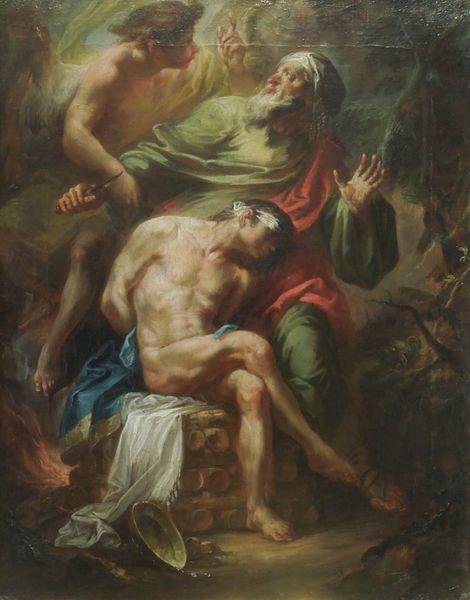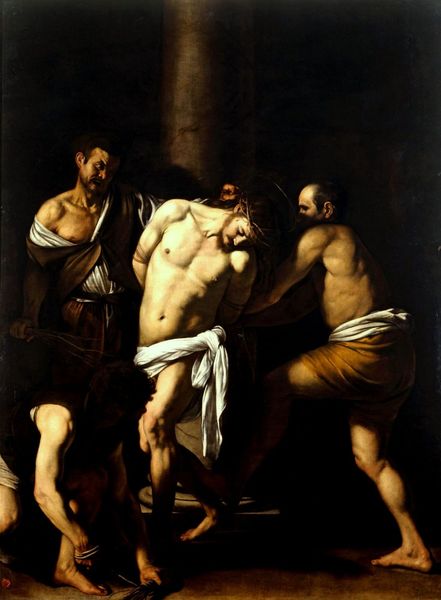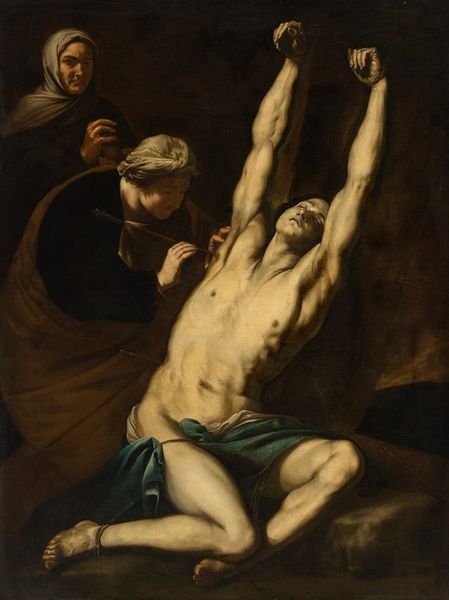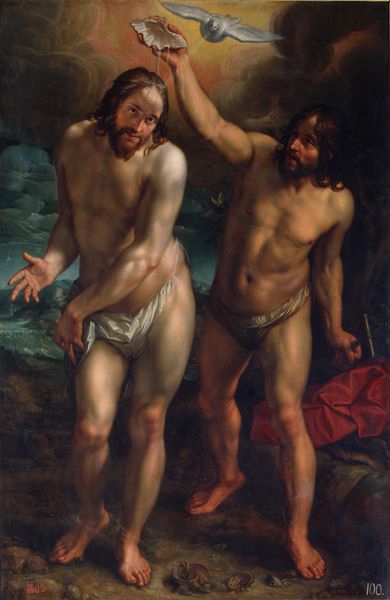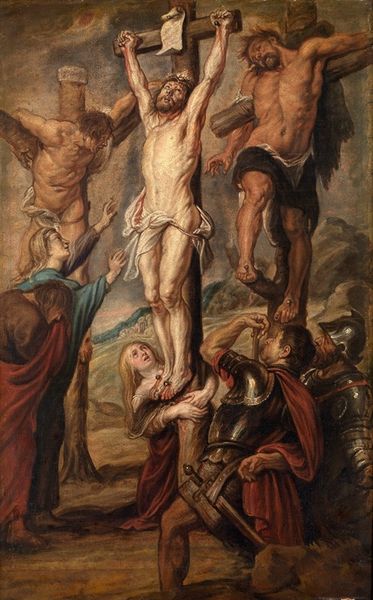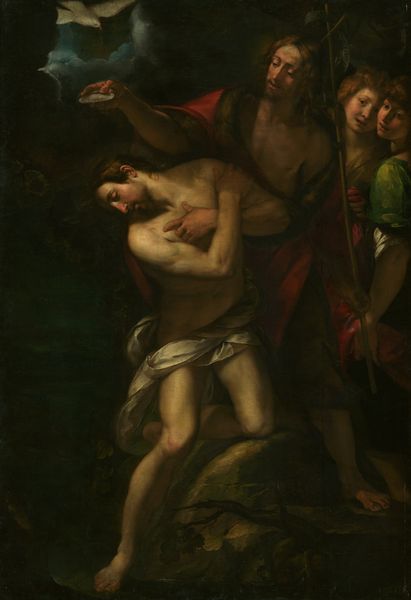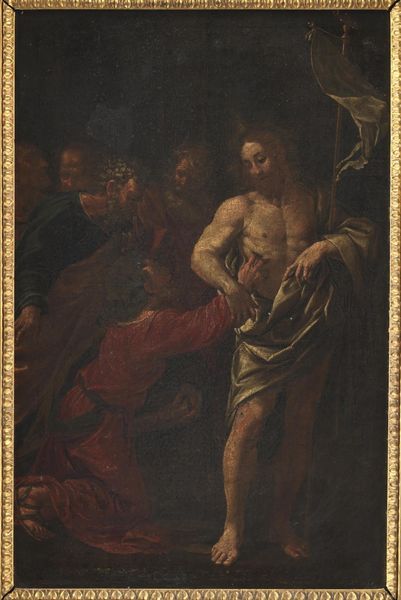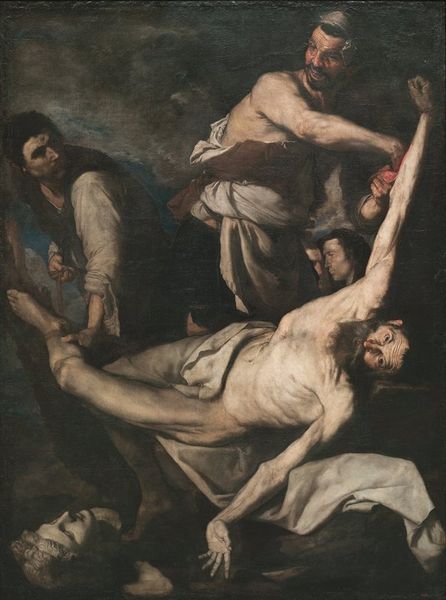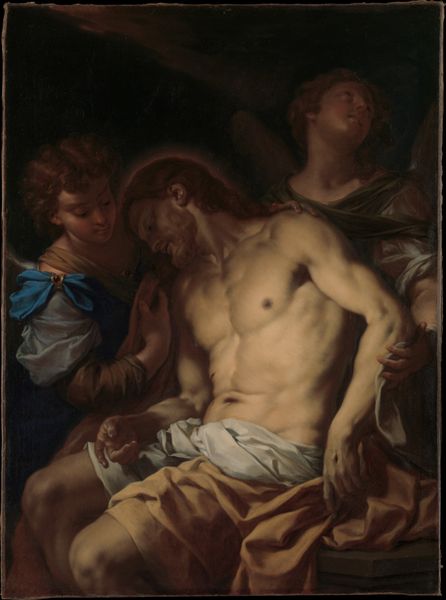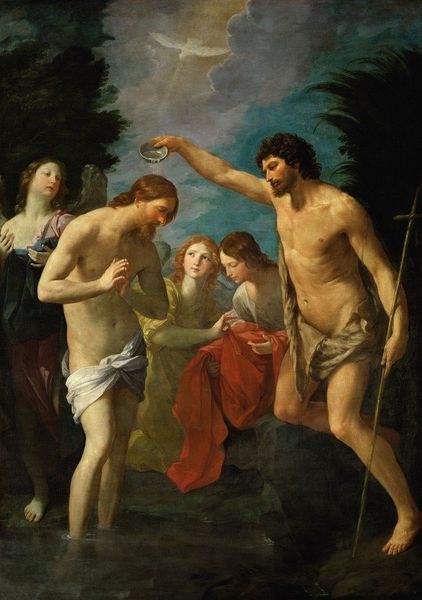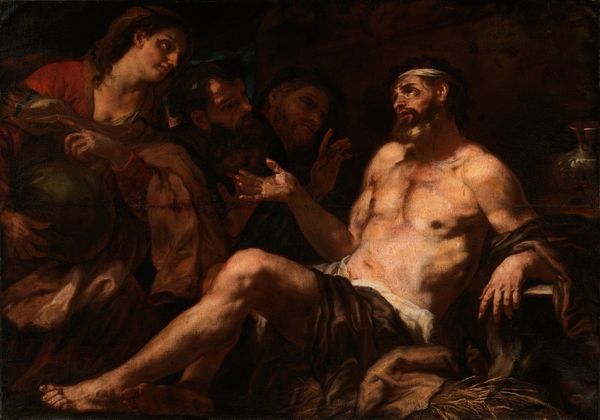
painting, oil-paint
#
narrative-art
#
baroque
#
painting
#
oil-paint
#
figuration
#
oil painting
#
mythology
#
human
#
painting painterly
#
history-painting
Copyright: Public domain
Editor: Here we have "The Flagellation of Christ" by Jan Cossiers, rendered in oil paint. It's hard to ignore the brutal scene depicted; it really evokes a sense of suffering. What do you see in this piece from a historical perspective? Curator: What I find most striking is how Cossiers uses this scene, a pivotal moment in Christian narrative, to comment on power dynamics of his own time. Consider the patrons who commissioned such works. Were they truly pious, or was this display of religious art also a demonstration of their own social authority? Editor: That’s a fascinating point. So, these depictions of Christ's suffering might also have served a political function? Curator: Precisely. Baroque art often blends religious fervor with political messaging. Think about where this painting might have been displayed – likely a church or the home of a wealthy patron, spaces designed to impress and inspire obedience. How does the artist’s choice of representing the flagellation, rather than another scene from the Passion, contribute to this interpretation? Editor: The violence is certainly heightened here. I guess it makes the statement more powerful and perhaps more disturbing, intended to elicit a strong reaction. Curator: Yes, and the staging matters. Look at the way Christ is positioned, the dramatic lighting, and the active figures surrounding him. These elements all amplify the emotional impact, but they also speak to the broader Baroque aesthetic of spectacle and persuasion, prevalent across religious and secular art. Does considering this historical context alter your initial perception? Editor: It definitely does. It's easy to get caught up in the immediate emotional response, but thinking about the political implications adds a whole other layer of understanding. It encourages me to analyze its intended audience back in the Baroque era. Curator: Exactly! By understanding the social and institutional context, we gain insights into the intended meaning of art and the various layers of influence that shaped it. It shows how art engages with audiences through politics and representation. Editor: That's really helpful. Thanks for sharing your insights.
Comments
No comments
Be the first to comment and join the conversation on the ultimate creative platform.

